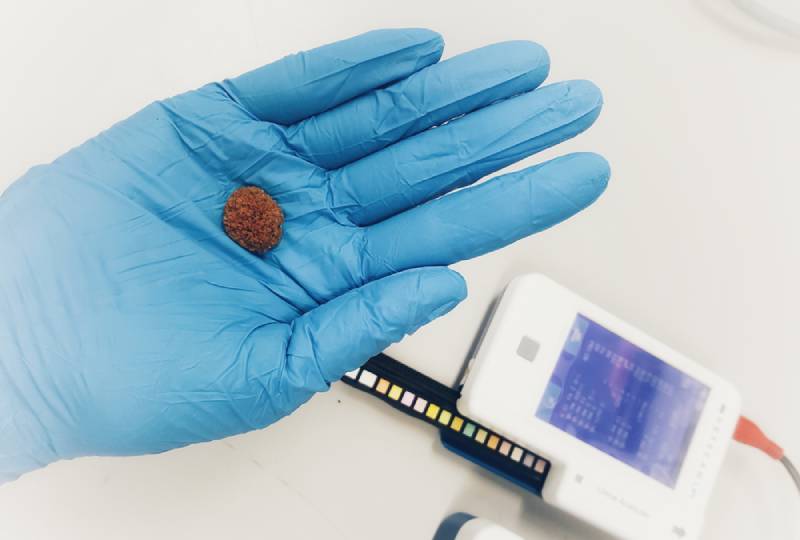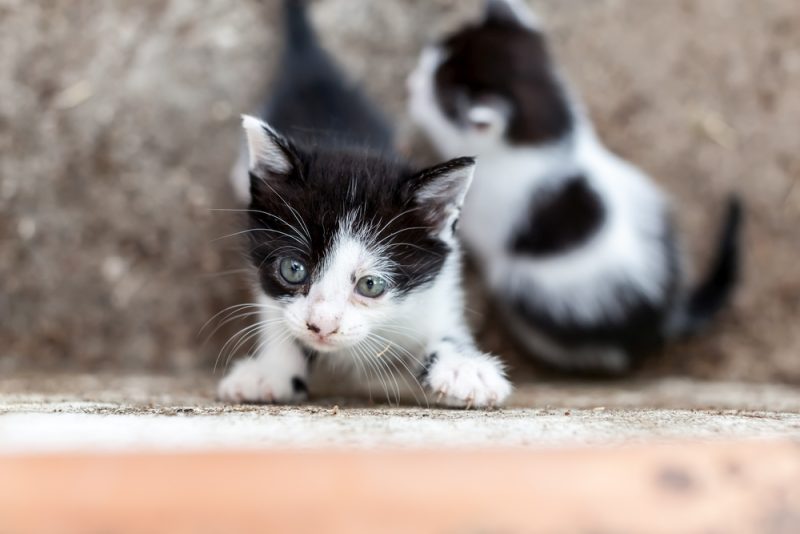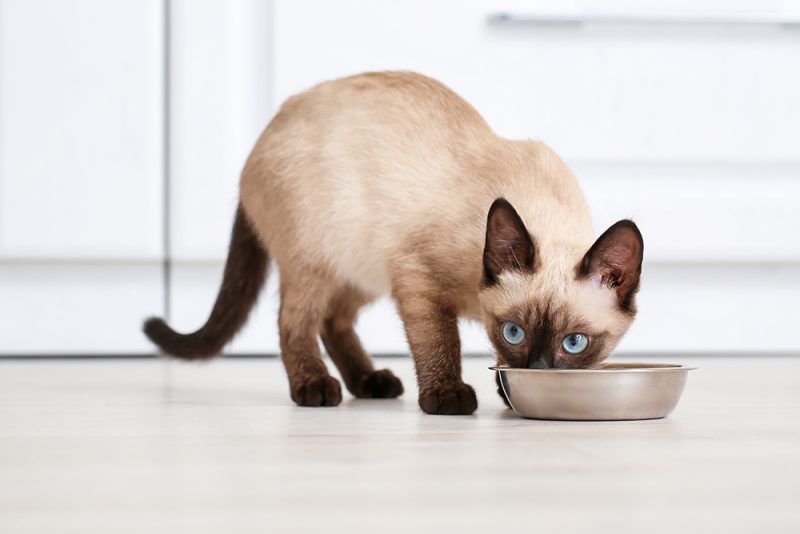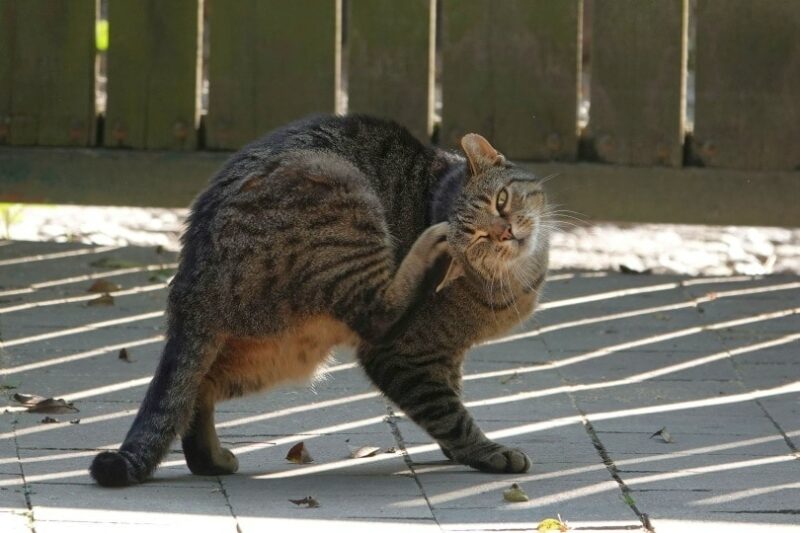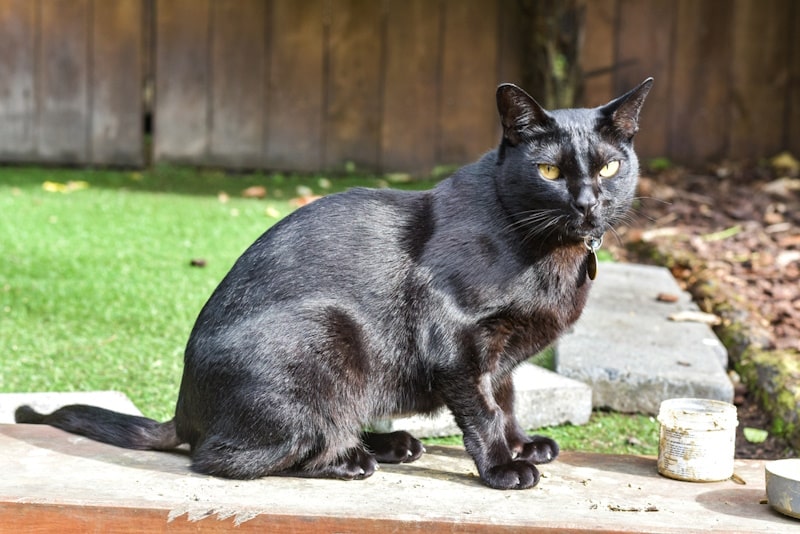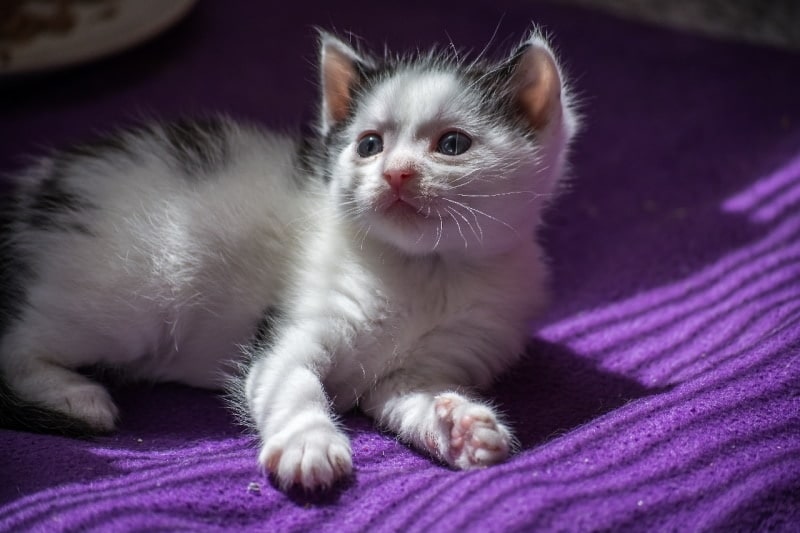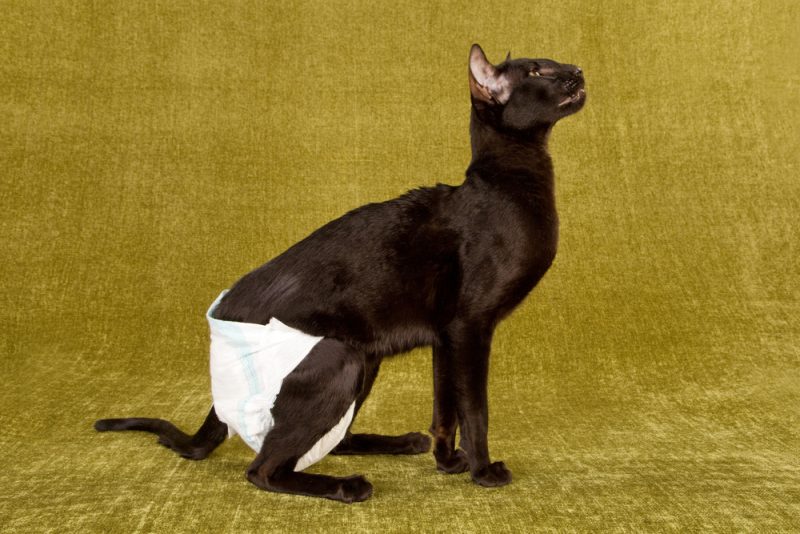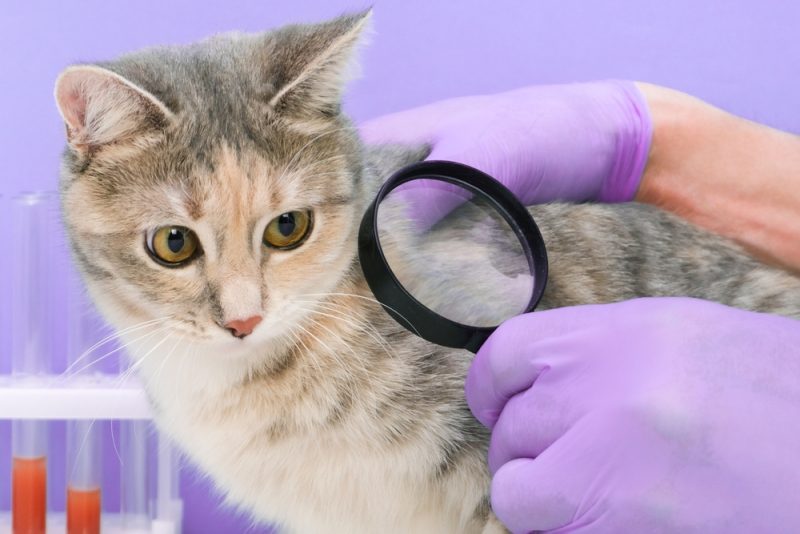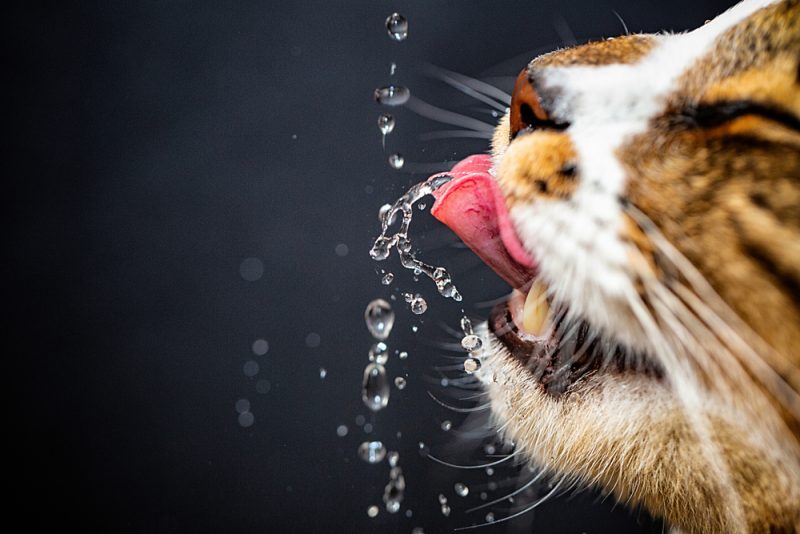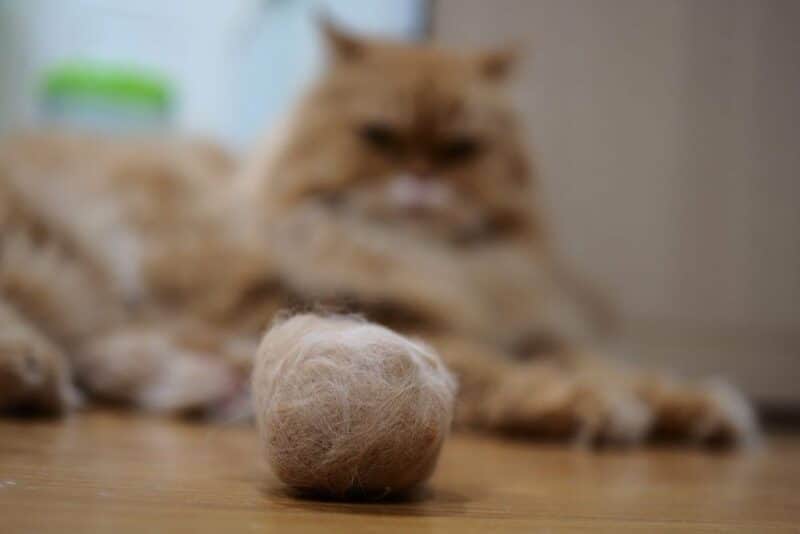In this article
View 5 More +Crystals, minerals, and precipitates—these things can form and grow within an animal’s urinary tract system to become what is called a stone (also referred to as a urolith or calculi). Stones can vary both in where they are located in the urinary tract system as well as what they are composed of. When they occur in the kidney, they are called nephroliths, which are also commonly called kidney stones.
In this article, we’ll discuss kidney stones in cats and what that may entail for your feline friend!

Brief Overview of a Cat’s Urinary System
A cat’s urinary system has several functions, but the primary purpose is the production and removal of urine so that waste and excess fluid can be expelled from the body. The urinary system itself consists of a continuous system that can be divided into the upper urinary tract (two kidneys and two ureters) and the lower urinary tract (a single bladder and urethra).
If one were to follow the passage of urine, each kidney would form the urine byproduct, which then funnels to its respective ureter. The ureter then acts as a passageway by bringing urine from the kidney to a single holding place: the bladder. From the bladder, the urethra will carry and expel urine outside of the body.
As mentioned, stones can occur at any point in the urinary tract system, and when they form in the kidney, they can either stay in the kidney (nephrolith), may move into the ureter (ureterolith), or sometimes, even continue to move further on down through the urinary tract system.

What Are Kidney Stones?
In general, urinary tract stones themselves can be made up of about 10 various minerals. Each of these has a mineral and chemical name and has various distinct attributes that make it different from the others. Some examples include struvite, calcium oxalate, cystine, or urate stones. Each stone is primarily made up of its mother mineral (in calcium oxalate, this would be calcium), and then the remaining 2%–10% is an organic matrix.
Kidney stones in cats are actually not that common, especially when compared to other types of stones, such as bladder stones. In fact, in one study, only 5%–7% of the total type of urinary tract stones that were sent for analysis to a laboratory were nephroliths1! With that being said, it is suspected that this disease is underdiagnosed because there are often not any signs displayed by affected individuals, and even if diagnosed, it is not always seen as a medical problem.
It was found in the laboratory analysis that feline kidney stone composition was mostly calcium oxalate (71%) with some struvite (8%). Some of the even lesser common stones included calcium phosphate, purine, cystine, silica, or mixed.

What Are the Signs of Kidney Stones?
Unfortunately, nephroliths often do not show any signs (are asymptomatic) and may only be discovered incidentally while evaluating for other health problems or concerns. If there are any signs, they may include bloody urine or a recurring urinary tract infection (UTI). Rare signs would include vomiting and pain in the abdominal or lumbar (along the back further down where kidneys are located) areas.
A concurrent UTI could have its own signs, which may consist of painful or difficult urination, frequently urinating in small amounts, etc. In addition to or because of kidney stones, a cat could also have renal failure or an obstruction due to the stone, and these would have their own respective signs. Renal failure may present with signs such as not wanting to eat, weakness, vomiting, weight loss, and becoming dehydrated. In the case of a stone causing obstruction, there may be pain, dribbling urine, or inability to urinate at all.
What Are the Causes of Kidney Stones?
While how a stone forms exactly is not entirely understood in cats, some prominent thoughts include high urine retention or the urine being very concentrated, which can predispose a cat to kidney stones. Other risk factors could be having a lower urinary tract infection ascend to the kidneys, having urine pH too high or too low, etc.
The specific cause of a kidney stone can also depend on the distinct urolith type that is present. For example, struvite stones can be present in urinary tract infections with specific bacteria, while calcium phosphate stones could be caused due to a high amount of calcium present, such as from renal bleeding, diet, or other causes.
If you are concerned or have questions about your cat’s health, you can also speak to a vet from the comfort of your own home to help make a plan. They can determine when an in-clinic vet visit should be made.
If you need to speak with a vet but can't get to one, head over to PangoVet. It's an online service where you can talk to a vet online and get the advice you need for your pet — all at an affordable price!


How Do I Care for a Cat With Kidney Stones?
Kidney stones are typically diagnosed via imaging such as with an X-ray (where only certain types of stones are able to be seen) and/or ultrasound. Bloodwork may show some signs if there is a bacterial infection or some changes if renal failure or obstruction is present. High calcium in the blood may also be a clue for stones that contain calcium. A urinalysis (a sample of urine that is evaluated in several ways) may show signs of crystals being present (which may help to signal the mineral composition of a stone), blood, or additional signs of a urinary tract infection.
If your cat does have kidney stones and they are termed inactive (not causing clinical signs as well as not getting much larger, causing a urinary obstruction, or an infection), then monitoring should be regularly implemented with imaging, urinalysis, and urine culture. It is also important to note that an “inactive” nephrolith may not always stay that way, and obstruction can occur at any point, even without any clinical signs exhibited. This scenario could then cause damage to the offending kidney, which may be serious and/or irreversible. The cost-to-benefit analysis of just monitoring or giving conservative treatment must be weighed against that which may occur from surgery.

If it is found that the kidney stones are causing pain or medical problems (such as obstruction, recurring infection, continual nephrolith enlargement, etc.), then treatment may include medical management and/or surgical management. A medicated diet that can potentially dissolve the stone would not be an option for the most common stone type, calcium oxalate, but is an option for struvite stones as long as there is not an obstruction causing an emergent health concern. In certain conditions, aggressive intravenous (IV) fluids may be given in an attempt to push a stone into the bladder if it has gone from the kidney to the ureter and is stuck.
Regarding surgical options, there are the options of a nephrotomy or pyelolithotomy, although these come with their own set of risks. Extracorporeal shock wave lithotripsy (ESWL) is a noninvasive form of treatment that uses energy to break up a stone (or stones) into pieces. While it can be a great option for dogs, it may not be as effective for cats.
Follow-up care post-surgery will include monitoring with imaging (such as X-rays and/or ultrasound), urinalysis, and urine culture every 3–6 months to determine if there is a recurrence, as this can be common.

Frequently Asked Questions (FAQ)
What Can I Do to Prevent Kidney Stones?
Each specific stone type can require its own specific set of preventative measures. For example, some stones are more likely to form in more acidic urine, so proper diet and maintaining urinary health are paramount. In addition, if it is a type of stone that can be dissolved/prevented with medicated food, that may be an option to continue for prevention as well.
Two general mainstays to help prevent urinary tract stones, including kidney stones, are to increase urine volume and prevent urine retention.
To increase urine volume some ideas are to encourage cats to drink (more) water. Cats like having fresh water, so it should be changed frequently, daily if possible. Having multiple options is also ideal, especially if more than one cat is present. A water fountain has even been thought to elicit more interest from a cat.
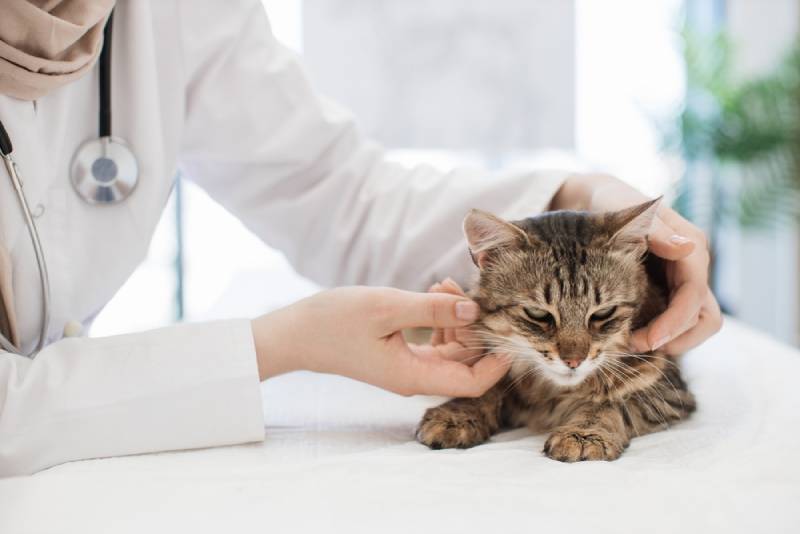
Try to increase the moisture content of their food. This could be achieved by adding water to dry food or including or feeding wet food as part or all of their diet.
To prevent urine retention, ensure the litter box is as much of a safe haven as possible. This means giving the appropriate number of litter boxes (one more litterbox than cats present) in different locations. Keeping the boxes cleaned and scooped very regularly while free from odor may prove to be helpful. Some cats may also have preferences regarding the type of litter or litter box (covered, large, easily accessible, etc).
What Is My Cat’s Prognosis?
This will depend on various factors such as the type or composition of the nephrolith, where it is located, how big it is, and if it is continuing to grow. The good news is that inactive nephroliths may be inactive for many years, which would prove to be the best prognosis! If there are secondary complications such as obstruction, a recurring infection, or renal failure, the prognosis would depend on medical intervention and how well that takes effect.
Even with medical intervention, there are potential risks associated, but the prognosis would be more favorable than if no intervention is elected as a sick, untreated cat has a poor prognosis.

Conclusion
Kidney stones in cats, while not very common, can and do occur. These stones are often rather elusive and may not show any obvious signs. If they are not causing any medical problems in your cat, they may be able to be simply monitored over time. If and when any negative health issues occur, a veterinarian will be your guide for the best treatment option for your cat and their situation.
Featured Image Credit: Pee Paew, Shutterstock

